Homeric nouns: 3rd declension -ς and -τ
Annotations
Seth Levin and Meagan Ayer created these charts based on Clyde Pharr's Homeric Greek: A Book for Beginners (Boston: D.C. Heath, 1920). Since they have a pedagogical rather than descriptive-grammatical purpose, they sometimes include, to complete a paradigm, forms that do not in fact occur in Homeric Greek. Lemma searches in Perseus under Philologic can clarfy what forms are actually found in the Homeric poems (and how commonly).

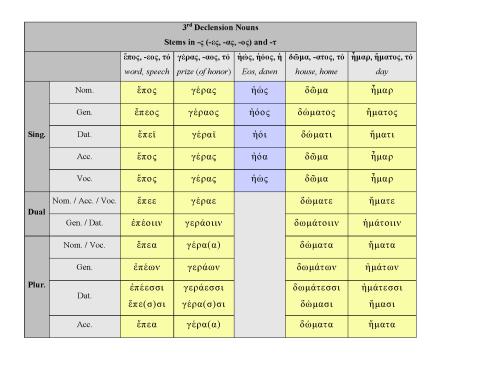
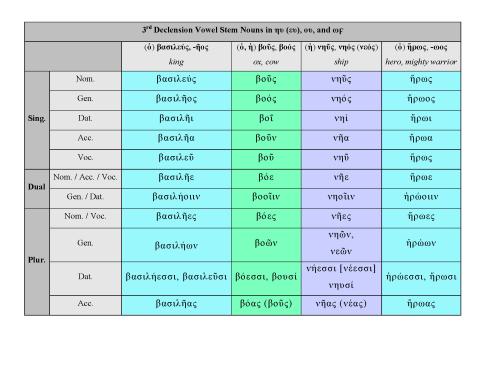
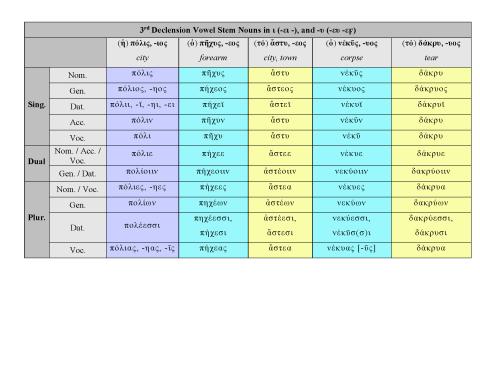
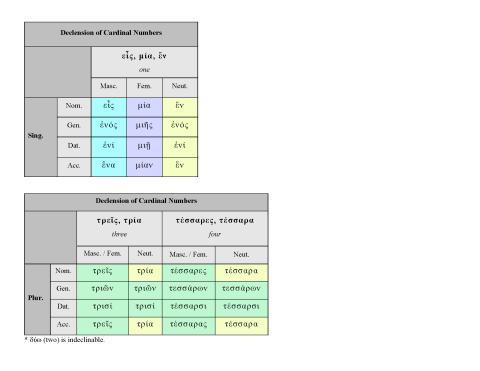


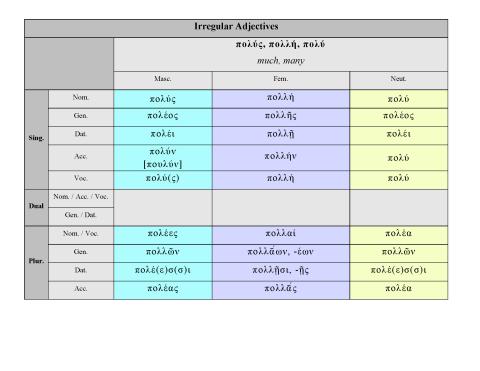
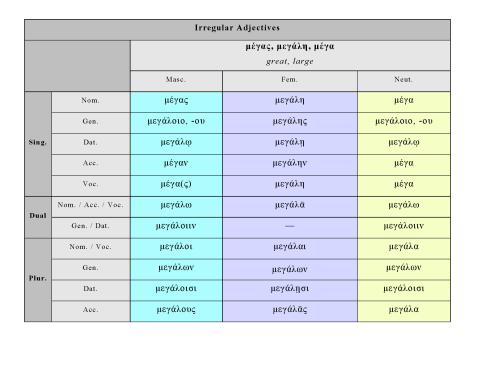
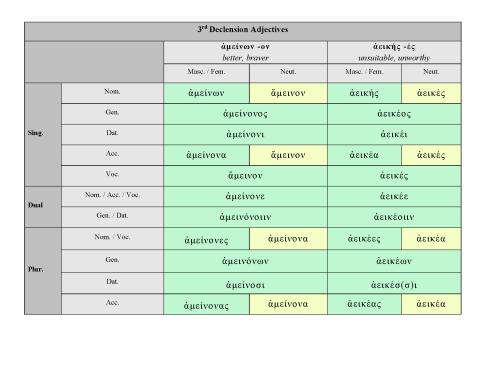
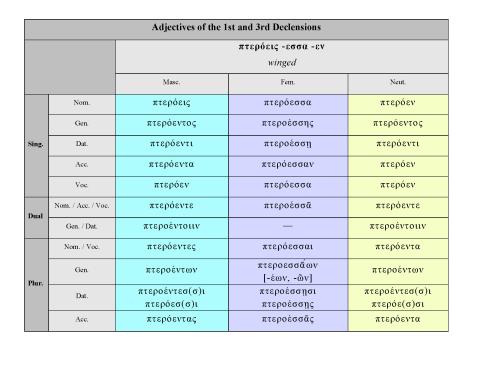
In addition to the irregular form πολύς, πολλή, πολύ there is another form (πολλός, πολλή, πολλόν) of this adjective which is regular and declined like καλός, καλή, καλόν.